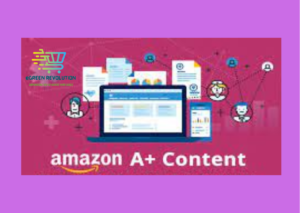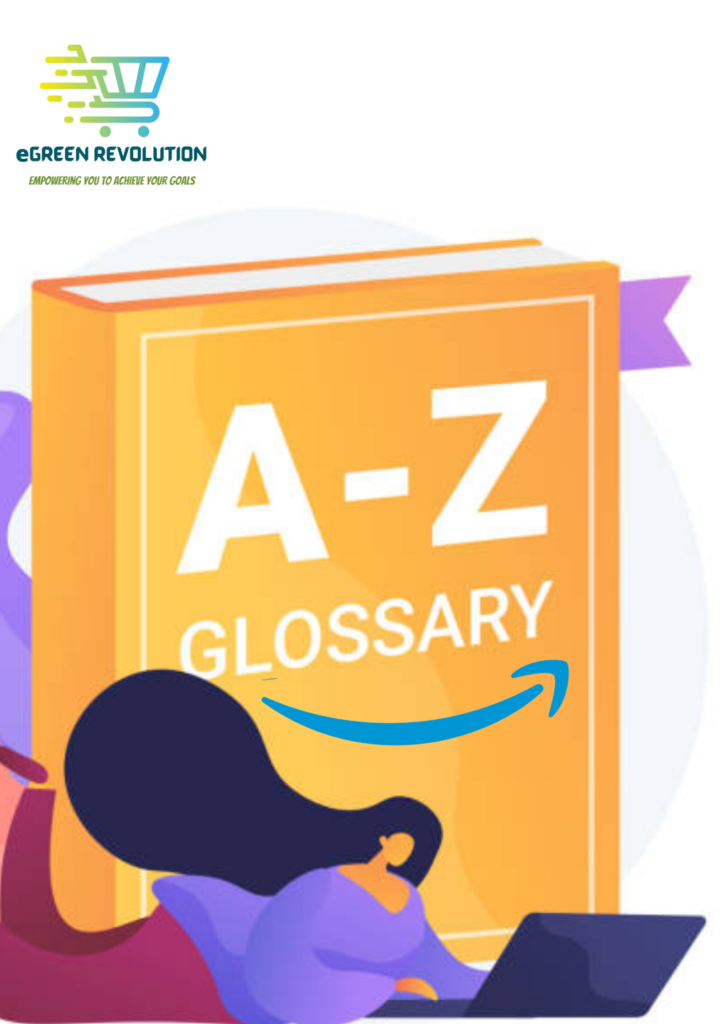

As a new seller, knowing and understanding the terms associated with your business will help you navigate the ins and outs of e-commerce entrepreneurship. So, with marketplaces like Amazon having its own unique e-commerce language, we created a glossary of terms and abbreviations to help you get up to speed.
A+ Content
An Amazon program for sellers which allows you to get the most out of Amazon Seller Central by creating more detailed product descriptions with additional images, video and text.
A9
A subsidiary of Amazon that develops search engine and search advertising technology. Organic ranking is everything and A9 powers Amazon’s product search pages in addition to other e-commerce retailers.
A/B Testing
Sometimes called “split testing“, this is a method of trying out two different website/product listings to compare and contrast sales metrics, typically conversion rates. A/B testing can increase your profits by as much as 25% so start split-testing and start earning more on Amazon.
Account Health
This refers to performance targets and policies which all sellers must adhere to in order to continue selling on Amazon. Account health metrics include customer service performance, product policy compliance, and shipping performance. Ultimately, you want to get good reviews without putting your account health in jeopardy.
ACoS (Advertising Cost of Sale
The percentage of attributed sales spent on advertising. This is calculated by dividing total ad spend by total sales. You can calculate your profits on Amazon quickly and easily with Sales Analytics.
Ad Daily Budget
The average daily amount you are willing to spend on a selected ad group for your keywords..
Ad Impressions
The number of shoppers who see your product’s ad.
Ad Orders
The number of individual orders made by shoppers who clicked on your product’s sponsored ad.
Ad Sales
The total product sales generated within one week of clicking on your product’s sponsored ad.
Ad Spend
The total click charges for an Amazon sponsored campaign (in the selected time period).
Ad Status
The current status of your ad group. The status may be running, paused, ended, archived, scheduled, incomplete, out of budget, or payment failure.
Ad Targeting
This option determines whether you select the keywords for an ad campaign or Amazon automatically selects keywords for an ad campaign.
Affiliate Marketing
A marketing arrangement by which an online retailer pays a commission to an external website for traffic or sales generated from its referrals. Many people build businesses using Amazon’s Affiliate Program.
Alibaba
A Chinese e-commerce, retail, and technology conglomerate. For Amazon FBA selling purposes, this is a website which acts as a third party platform between private label businesses and global suppliers, wholesalers, and manufacturers. Alibaba is the largest internet retailer in the world measured by total sales.
Alibaba Assessed Supplier
This designation helps sellers reach out to vetted suppliers. It represents a manufacturer, supplier, or wholesaler on Alibaba that has been qualified by an accredited third party inspection company.
Alibaba Gold Supplier
A manufacturer, supplier, or wholesaler that has been pre-qualified by Alibaba. This is another way to evaluate suppliers on Alibaba.
Alibaba Trade Insurance
A free service provided by Alibaba that protects buyers and sellers on their orders from the moment of payment to delivery.
AMZ (Amazon)
An e-commerce and cloud computing company based in Seattle, Washington, USA. Amazon is the largest internet retailer in the world measured by revenue and market capitalization.
API (Application Programmer – or Programming Interface)
A code that allows two platforms/software programs to communicate with one another.
ASIN (Amazon Standard Identification Number)
A unique 10-character string that identifies products on Amazon.
A-to-Z Guarantee
An Amazon program which guarantees the condition and timely delivery of third party products. Amazon customers may make claims against sellers under the a-to-z guarantee umbrella.
Automatic Targeted Ads
Advertisements which are targeted to relevant search terms by Amazon and do not require you to input specific keywords.
Business that is conducted between companies. As an Amazon seller, you may qualify to sell products directly to businesses in addition to consumers.
When you’re a seller, you want to get the #1 ranking keyword in your niche in less than 60 days. For manually targeted Amazon advertising campaigns, the Bid+ button can help you with that. It allows you to raise bids in a campaign up to 50% more than your default bid when ads are eligible to show at the top of search results.
Promotions, like BOGOs, are one of the best ways to launch new products on Amazon and rank instantly. Referring to a ‘Buy one get one’ promotion, BOGOs. allow you to offer two products for the price of one to spotlight a new product or to get your current customers to buy differently.
A type of product manufactured by a particular company under a particular name. Building a solid brand requires learning advanced product research strategies.
An Amazon program that helps you protect your registered trademarks on Amazon and create an accurate and trusted experience for customers. Additionally, navigating Amazon’s Brand Registry gives you access to enhanced brand content options.
An Amazon designation based on an in-house algorithm that reflects a product’s sales, past and present. The BSR can be used to estimate a product’s sales numbers.
The Buy Box is a widget visible on most Amazon product listing pages that allows a shopper to quickly purchase products they are searching for. If more than one seller is active on the listing, only one can win the Buy Box.
Category
Amazon’s product division based on shared characteristics and uses. Products may have both a broad category placement (also called departments) and one or more sub-category placements.
An online site where buyers can see the price and rank history of a product.
The accumulated total of all costs used to create a product or service, which has been sold. For an Amazon private label product, this may include the cost of materials, packaging, shipping, duty taxes, etc. Luckily, there are tools to help you easily calculate your product’s profitability.
Using Amazon’s marketing services is key to successfully launching a new product.As an Amazon seller, you may use Amazon’s coupon program to offer discounts on your products.
An advertising method that refers to the price you pay each time 1,000 people view your ad.
The practice of funding a project or venture by raising many small amounts of money from a large number of people, typically via the Internet.
The percent of shoppers who see your ad and click on it. This is calculated by dividing total clicks by total impressions.
The act of passing goods through the official department that administers and collects the duties levied by a government on imported goods.
The supplier is responsible for arranging carriage and delivering the goods at the named place, cleared for import and all applicable tariffs and duties paid.
A fulfillment method where products aren’t kept in-house. Instead, when the customer buys an item, the store purchases the product from a third-seller and then it’s shipped directly to the customer.
A tax levied by the government on imported and exported goods and services.
EAN (European Article Number): Also known as an International Article number, an EAN is a 13-digit string used to identify a product traded globally. There is also an 8-digit EAN for small packages, but it’s not commonly used.
An Amazon program which encourages shoppers who have already purchased a product to leave authentic feedback of their experience regardless of whether it’s a 1 or 5-star review.
This is an option given to Amazon’s European sellers, allowing them to sell in other Amazon marketplaces while fulfilling their orders from fulfillment centers in their home location.
The process of sending goods or services to another country for sale.
Extension is a software-as-a-service application that integrates directly into your Google Chrome browser. Extension extracts data from product listings and creates a spreadsheet offering up product metrics to explore and validate product ideas
The seller is responsible and liable for the entire shipment from door to door. (This is when you would use a freight forwarder to step in).
A service offered by Amazon which allows third party sellers to store their products in Amazon’s fulfillment centers. When a sale is made on Amazon, Amazon will pick, pack, ship, and handle customer service on behalf of the third party seller.
FBM sellers store, pick, pack, ship and provide their own customer service for buyers who purchase their product online at an Amazon store…and lower Amazon fees.
A fulfillment center is a large warehouse where products are stored, prepped, and shipped on behalf of Amazon and its third party sellers.
The seller is responsible and liable once the shipment is handed over to the carrier, typically near the port in the country of origin.
Term used to describe brands that are being distributed and sold by Amazon on its platform. Amazon invites these 1P sellers to join and they track their items using Vendor Central, rather than Seller Central.
A 10-character string that Amazon uses to identify products unique to a seller shipping and storing their items in Amazon’s warehouses, also known as (aka) fulfillment centers.
This means that the supplier is responsible for getting your goods from the factory to the port. This cost is added to the manufacturing cost.
An Amazon promotion template which allows you to offer a limited-time, free shipping offer for a subset of your catalog.
A third-party shipping service that will communicate with your supplier to coordinate all of the shipping details. Whether you ship your Amazon products via ocean freight or air, a freight forwarder can help.
The cost Amazon charges to pick, pack, and ship your product through its FBA service.
A division of restricted products locked to sellers without prior approval from Amazon.
An Amazon promotion template which allows you to offer your products for free to generate buzz or build a social media following.
Gross profit is the profit a company makes after deducting the costs associated with making and selling its products, or the costs associated with providing its services.
GTINs are identifiers that are used to look up product information.
The process of bringing goods or services into a country for sale.
These are the standard terms used in international shipping agreements. They describe who is responsible (and liable) for moving your products from point A to point B.
These are the products which you have listed and available for sale on Amazon and any other e-commerce platform. Sellers need to know how to protect their products with inventory management.
These can be either 10 or 13-digit strings, and they identify a specific book, edition of a book, or book-like product (think audio-book or ebook).
A software-as-a-service application that allows you to scan and sort Amazon’s product catalog instantly. The data helps sellers explore and validate new product ideas. And it’s one of the best ways to keep tabs on your competitors and make more money on Amazon. It tracks your competitors and helps keep your sales high.
Jungle Scout’s free public help desk where commonly asked questions are answered.
A popular crowdfunding platform.
This is the cost of a single item (cost per unit) plus freight and customs charges.
The section of a webpage accessed by clicking the page’s hyperlink, typically the home page of the website.
A free or cheap product offered in exchange for a potential buyer’s contact information, typically any email or phone number.
A time-bound, promotional offer where a product is featured for several hours on the Amazon Deals page.
Long tail keywords are phrases containing two words or more and are used when focusing on a specific niche.
A metric generated by the Jungle Scout software that takes into account the length and keyword richness of a listing’s title, its bullet point and description, as well as the number of pictures and resolution of the photos. This helps you find products whose listings can be optimized — though it’s also important to know how to optimize those Amazon product listings for high conversions.
Advertisment campaigns where you are able to select the individual keywords you wish to target.
This might come up when you’re dealing with wholesalers or buying directly from a manufacturer.
Also known as a sales funnel or purchase a funnel, it is a consumer focused marketing model which illustrates the theoretical customer journey towards the purchase of a product or service.
The lowest possible order volume allowed by a manufacturer for a particular product.
This is the price for which the manufacturer suggests their products be sold. This is shown above the selling price on Amazon when the product’s price is less than the MSRP.
This Amazon fulfillment option allows FBA sellers to choose the countries where they want to send their inventory and have orders for that Amazon store fulfilled by that local fulfillment center.
This refers to Amazon’s Marketplace Web Services and is where you get access to your API/MWS keys (application programming interface).
The actual profit after working expenses not included in the calculation of gross profit have been paid.
The process of sourcing products cheaply on one e-commerce platform for sale on another e-commerce platform at a higher price.
A company that produces parts and equipment that may be marketed by another manufacturer.
Jungle Scout’s in-house algorithm, factoring in the demand for a product according to units sold, competition (the number of reviews for the Top 10 products under a given keyword) and listing quality (determined by a number of factors like title, keywords, number of photos, quality of bullet points and product description.
As it relates to marketing, an opt-in gives a potential customer the choice to become involved with or get something from the website.
If a seller is actively selling in Amazon’s European marketplaces, PAN EU is an option that allows them to send their products to one fulfilment centre. Then, Amazon ships the items to their fulfilment centres around the continent.
A page in seller central that offers up information on how you are doing with respect to Amazon customer satisfaction.
A product manufactured or packaged for sale under the name of the retailer rather than that of the manufacturer. If you go this route, there are lots of resources explaining how to get product ideas for your product.
Also known as cost-per-click (CPC), this is a type of promotion that charges the seller of the product each time one of their ads is clicked. It’s so important that finding a free comprehensive, step-by-step guide to Amazon PPC optimization is easy.
The amount of money required to purchase a product. Success in e-commerce is partially rooted in knowing how to find the best price for your product.
A series of discount and giveaway options offered to Amazon sellers to promote sales and social media growth.
The first quarter of the financial year – January to March
The second quarter of the financial year – April to June
The third quarter of the financial year – July to September
The fourth quarter of the financial year – October to December
The process of finding underpriced products in a retail store to sell at a higher price on Amazon or another e-commerce platform.
A percentage based cost for selling products on Amazon.com.
Income derived from the sale of goods or services, OR in the Jungle Scout apps, a 30-day revenue estimate calculated by multiplying the estimated 30-day sales by the product’s listed price. The best way to boost revenue is by pinpointing profitable products.
An order placed on Alibaba to solicit a request for price estimates on wholesale goods.
This is the loss or gain an investment generates relative to the amount of money invested. The typical ROI formula is:
ROI = (Gain from investment – Cost of investment) / Cost of investment
A free Jungle Scout tool that estimates the 30-day sales for a given Best Sellers Ranking in a particular category, and in a particular Amazon marketplace..
A webpage created for the purpose of coercing viewers into making a purchase.
A single product shipped to a buyer to demonstrate the quality, service, and competence of a manufacturer, supplier, or wholesaler.
The web interface certain Amazon marketplace sellers use to manage their Amazon Pro or Individual seller accounts. These sellers (FBA and FBM sellers alike) are considered to be third-party sellers.
A rating awarded to Amazon’s third party sellers from shoppers who have recently made a purchase to let other shoppers know of their experience. Shoppers may rate the overall experience with 1 to 5-stars. They may also note whether or not the product arrived on time and how the customer service experience was (if applicable). Finally, they must leave a brief comment describing their experience.
The process of maximizing the number of visitors to a particular website by ensuring that the site appears high on the list of results returned by a search engine. Knowing how to perform persuasive search engine optimization will help your sales.
This is Amazon’s program that allows FBM sellers to display the Prime badge on their listing by adhering to Amazon’s timeline for fast shipping.
These are machine-readable codes used to identify a specific product, and vary from company to company. It’s used for inventory purposes.
A pay-per-click advertising solution that enables you to promote the products you sell with keyword-targeted ads (manual or automatic) that appear in highly visible placements on Amazon.com.
A squeeze page is a landing page designed to capture opt-in email addresses from potential subscribers.
A service from Amazon that allows vendors and sellers to create their own brand stores on Amazon.com and provide their customers with an immersive virtual shopping experience. An effective storefront can help you scale your Amazon business.
Term used to describe merchants unrelated to the “owners” of an e-commerce platform. For example, on Amazon 3P sellers are those who sell FBA or FBM.
When an Amazon.com user leaves a product review without first purchasing the respective product, it is considered an “unverified review”. Unverified reviews carry less weight when Amazon averages a given product’s reviews, that’s why sellers need to know how to get product reviews without incentivization.
A UPC is a machine-readable code used to identify a specific product and they are identical from company to company. It is used to track basic information about the item.
A sales technique where a seller induces the customer to purchase more expensive items, upgrades or other add-ons in an attempt to make a more profitable sale.
A virtual assistant is someone who usually provides administrative help while working remotely. VAs also tend to be contract workers, and can also provide bookkeeping, data entry, research, and much more.
Fixed charges from Amazon on certain products (mostly media).
When a seller is a member of Vendor Central, they are considered a first-party (1P) seller. Essentially, VC sellers sell their product in bulk to Amazon, who then acts as a distributor for that seller.
When an Amazon.com user leaves a product review after purchasing the respective product, it is considered a “verified review.” Verified reviews carry more weight when Amazon averages a given product’s reviews. And you want reviews that “WOW” Amazon customers.
An encryption technology that allows information to be sent safely across a less secure connection.
White label and private label are usually used interchangeably, but white labelling is slightly different. White labelling means a company removes their logo/brand on one of their products and agrees to put the brand/logo of another company on that item.
The process of selling products — in large quantities and at low prices — to others who then resell them either in brick and mortar stores or online, on sites like Amazon and eBay.



